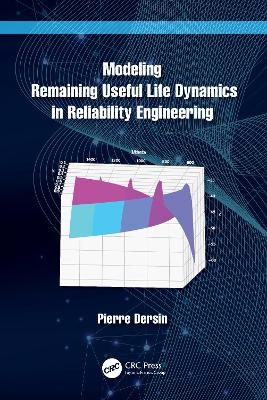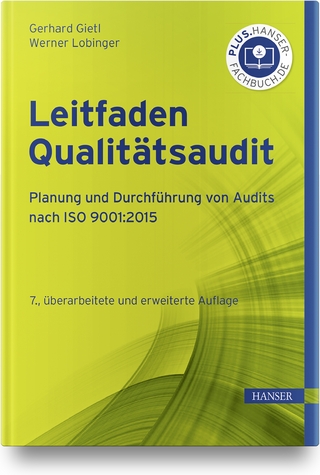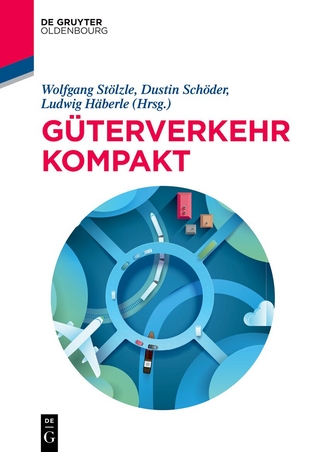
Modeling Remaining Useful Life Dynamics in Reliability Engineering
CRC Press (Verlag)
978-1-032-16859-3 (ISBN)
This book applies traditional reliability engineering methods to prognostics and health management (PHM), looking at remaining useful life (RUL) and its dynamics, to enable engineers to effectively and accurately predict machinery and systems useful lifespan. One of the key tools used in defining and implementing predictive maintenance policies is the RUL indicator. However, it is essential to account for the uncertainty inherent to the RUL, as otherwise predictive maintenance strategies can be incorrect. This can cause high costs or, alternatively, inappropriate decisions. Methods used to estimate RUL are numerous and diverse and, broadly speaking, fall into three categories: model-based, data-driven, or hybrid, which uses both. The author starts by building on established theory and looks at traditional reliability engineering methods through their relation to PHM requirements and presents the concept of RUL loss rate. Following on from this, the author presents an innovative general method for defining a nonlinear transformation enabling the mean residual life to become a linear function of time. He applies this method to frequently encountered time-to-failure distributions, such as Weibull and gamma, and degradation processes. Latest research results, including the author’s (some of which were previously unpublished), are drawn upon and combined with very classical work. Statistical estimation techniques are then presented to estimate RUL from field data, and risk-based methods for maintenance optimization are described, including the use of RUL dynamics for predictive maintenance.
The book ends with suggestions for future research, including links with machine learning and deep learning.
The theory is illustrated by industrial examples. Each chapter is followed by a series of exercises.
FEATURES
Provides both practical and theoretical background of RUL
Describes how the uncertainty of RUL can be related to RUL loss rate
Provides new insights into time-to-failure distributions
Offers tools for predictive maintenance
This book will be of interest to engineers, researchers and students in reliability engineering, prognostics and health management, and maintenance management.
Pierre Dersin graduated from the Massachusetts Institute of Technology (MIT) with a Ph.D. in Electrical Engineering after receiving a Master’s degree in Operations Research also from MIT. He also holds math & E.E.degrees from Université Libre de Bruxelles ( Belgium). Since 2019, he has been Adjunct Professor at Luleå University of Technology (Sweden) in the Operations & Maintenance Engineering Division. In January 2022, he founded a small consulting company, Eumetry sas, in Louveciennes, France, in the fields of RAMS, PHM and AI, just after retiring from ALSTOM where he had spent more than 30 years. With Alstom, he was RAM (Reliability-Availability-Maintainability) Director from 2007 to 2021 and founded the "RAM Center of Excellence".In 2015, he launched the predictive maintenance activity and became PHM (Prognostics & Health Management) Director of ALSTOM Digital Mobility, and then ALSTOM Digital & Integrated Systems, St-Ouen, France. Prior to joining Alstom, he worked in the USA on the reliability of large electric power networks, as part of the Large Scale System Effectiveness Analysis Program sponsored by the US Department of Energy, from MIT and Systems Control, Inc, and later, with FABRICOM (Suez Group), on fault detection and diagnostics in industrial systems. He has contributed a number of communications and publications in scientific conferences and journals in the fields of RAMS, PHM, AI, automatic control and electric power systems (including Engineering Applications of AI, IEEE Transactions on Automatic Control, IEEE Transactions on Power Apparatus & Systems, ESREL, RAMS Symposia, French Lambda-Mu Symposia, the 2012 IEEE-PHM Conference, the 2014 European Conference of the PHM Society ( keynote speaker) and WSC 2013). He serves on the IEEE Reliability Society AdCom and the IEE Digital Reality Initiative,and chairs the IEEE Reliability Society Technical Committee on Systems of Systems. He is a contributor of four chapters in the "Handbook of RAMS in Railways: Theory & Practice" (CRC Press, Taylor & Francis),2018, including a chapter on "PHM in Railways ‘(Ch.6). In January 2020, he was awarded the Alan 0. Plait Award for the best tutorial at the RAMS conference, " Designing for Availability in Systems, and Systems of Systems". His main research interests focus on the confluence between RAMS and PHM, as well as complex systems resilience and asset management.
1. Introduction, 2. Reminder of Reliability Engineering Fundamentals, 3. The RUL Loss Rate for a Special Class of Time-to-Failure Distributions: MRL Linear Function of Time, 4. Generalization to an MRL Piecewise-Linear Function of Time, 5. Generalization to a Wide Class of Lifetime Distributions, 6. Properties of the dg Metric, 7. Multiple Failure or Degradation Modes, 8. Statistical Estimation Aspects, 9. Implications for Maintenance Optimization, 10. Advanced Topics and Further Research
| Erscheinungsdatum | 17.07.2023 |
|---|---|
| Zusatzinfo | 15 Tables, black and white; 60 Line drawings, black and white; 60 Illustrations, black and white |
| Verlagsort | London |
| Sprache | englisch |
| Maße | 152 x 229 mm |
| Gewicht | 526 g |
| Themenwelt | Technik ► Maschinenbau |
| Technik ► Umwelttechnik / Biotechnologie | |
| Wirtschaft ► Betriebswirtschaft / Management ► Logistik / Produktion | |
| ISBN-10 | 1-032-16859-5 / 1032168595 |
| ISBN-13 | 978-1-032-16859-3 / 9781032168593 |
| Zustand | Neuware |
| Informationen gemäß Produktsicherheitsverordnung (GPSR) | |
| Haben Sie eine Frage zum Produkt? |
aus dem Bereich


